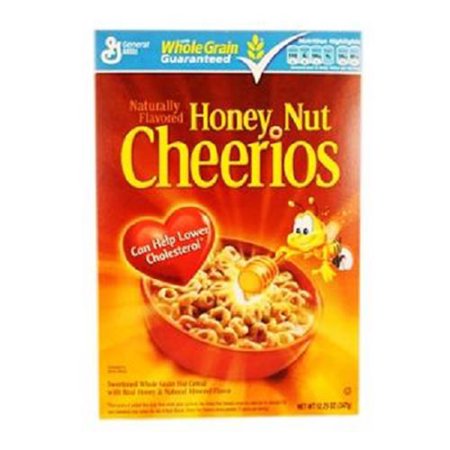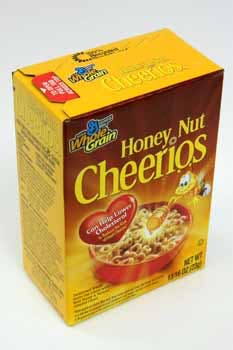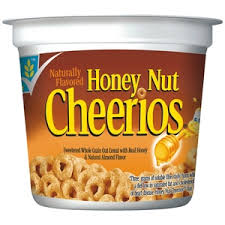Honey Nut Cheerios and cats have long been America’s two most favorite things. While Honey Nut Cheerios lost some popularity points, cats still rule the list. That being said, Honey Nut Cheerios are sweet and cats love to have them as treats. Cheerios are not toxic for us, they are considered even healthy, but is it good for cats to have Honey Nut Cheerios on a daily basis or at all is up to some discussions.
Cheerios are not poisonous or deadly for your cats, but they don’t benefit your cat in any way at all. What do they do then? Where do all the sugar and grains end up in your cat’s digestive system? Should you consider Honey Nut Cheerios as treats for your cats? We are here to tell you all about it in this article.
Cats are obligated carnivores. While domesticated cats have branched out from their wild ancestors long ago, their digestive tract is yet to adapt to all the human foods they have been fed. Their diet shouldn’t consist of sugars and grains at all, which Honey Nut Cheerios is mainly made of. Feeding a substantial amount of Cheerios can even be fatal for your cat.
Should You Feed Honey Nut Cheerios to Your Cat:
No, You shouldn’t. Cats are obligated carnivores, they need protein and fat in their diet, more than carbohydrates present in Honey Nut Cheerios.
While Honey Nut Cheerios has no adverse effect on the health of your feline when fed in very small quantities, it’s not particularly beneficial for them either. Cats with gluten and sugar sensitivities may suffer severe symptoms if Honey Nut Cheerio is fed. Some argue that the fiber in Honey Nut Cheerio could even be healthy for cats, but it’s not.
Even if you decide to treat your cat with Honey Nut Cheerios, limit the consumption to one or two bites, and certainly don’t feed them with dairy products like milk. Most of the cats are lactose intolerant – an adversary to popular beliefs.
Breakfast cereals, when they claim to have honey in their product, they claim to have “some amount of honey” in their product. The other cryptic part is sugar additives. Not only sugar but other sweeteners – harmful by the standard of cats are also used to produce Honey Nut Cheerios.
If your cat is diabetic or has gluten or sugar sensitivity, don’t feed them Honey Nut Cheerios. While occasional treats are somehow manageable, it won’t take much longer for you to adapt to the habit of feeding your cat Honey Nut Cheerios, as they are quite easy to get and feed.
Is Sugar Bad for Your Cats:

As obligated carnivores, cats do not need sugar or carbohydrates in their diets. Even if they devour whatever sweet you feed them, they can’t really taste sweetness. They can taste saltiness, bitterness, umami, but not sweet. Your cat doesn’t have a sweet tooth as you may have believed. They might like the smell and texture of Honey Nut Cheerios, or even like to play with those, but they don’t certainly can taste those.
The problem with Honey Nut Cheerios is the sugar additives. This could be a problem if your cat already has diabetes; vomiting, excessive urination and thirst, and walking flat on hind legs due to nerve damages are common symptoms of feline diabetes.
Severe diarrhoea can be a fatal consequence of overfeeding your cat with Honey Nut Cheerios.
Artificial sweeteners like Xylitol cause quite severe damages to dogs. The effects of Xylitol on cats are still to be addressed, but you shouldn’t risk feeding Xylitol intentionally to your cat.
Are Grains Bad for Your Cat?

Grains are not necessarily bad or harmful to your cat, at least not as harmful as sugars, unless they have an allergic reaction to them. But it’s a lot more likely that your cat will have an allergic reaction to beef and dairy products than grains. Some cats are even allergic to grooming products, but not grains.
The carbohydrate from grains can even be considered healthy for their need in your cat’s nutritional requirements, but they need such a small amount of carbs that you don’t even need to consider it while setting up their diet.
Even if your cat requires some carbohydrates, feeding them Honey Nut Cheerios is never a good idea due to their sugar contents, as we’ve discussed before.
What are the Nutritional Requirements for your Cat:
Your feline friend needs 62.7% protein, 22.8% fat, 11.8% minerals, and only about 2.8% carbohydrates. Which reduces more when hydration is taken into account. Being small hunters, their preys in the wild are also small creatures like mice and rabbits. Their source of carbohydrate is from the undigested grass and seeds of the herbivores they prey upon.
Your favorite cat food brand should have all the minerals and carbohydrates a cat might need. Feeding more would not benefit them at all. If you are not a believer in cat foods, you need to consider fish, small mammals, and occasional green vegetables, but never fruits and sweets.
Remember, your cat is unlikely to grow obese due to carbohydrate intake. Lack of sufficient movements, sedentary lifestyle and diabetes could be underlying causes.
The Bottom Line:
Honey Nut Cheerios and cats don’t go along too well. The occasional treat of one or two Os shouldn’t be a big deal but don’t consider including them in their daily diet. The best diet for them is certified non-flavored cat food that contains enough nutrition and water.
Apart from Honey Nut Cheerios, you should never feed your cat:
1. Onion and Garlic.
2. Raw Eggs, Raw Meat, and bones.
3. Chocolate and Sweetened Drinks.
4. Dairy Products, especially milk and cheese.
5. Dog Food
6. Fruits and Raisins
Don’t feed Honey Nut Cheerios when your cat:
– Has diabetes
– Is Pregnant.
– Has shown an allergic reaction to carbohydrates
Baked Salmon and eggs, Treats made with mackerel fish are healthy alternative treats for your cat.
If your cat is showing any sign of discomfort after eating Honey Nut Cheerios, contact your local vet immediately.
